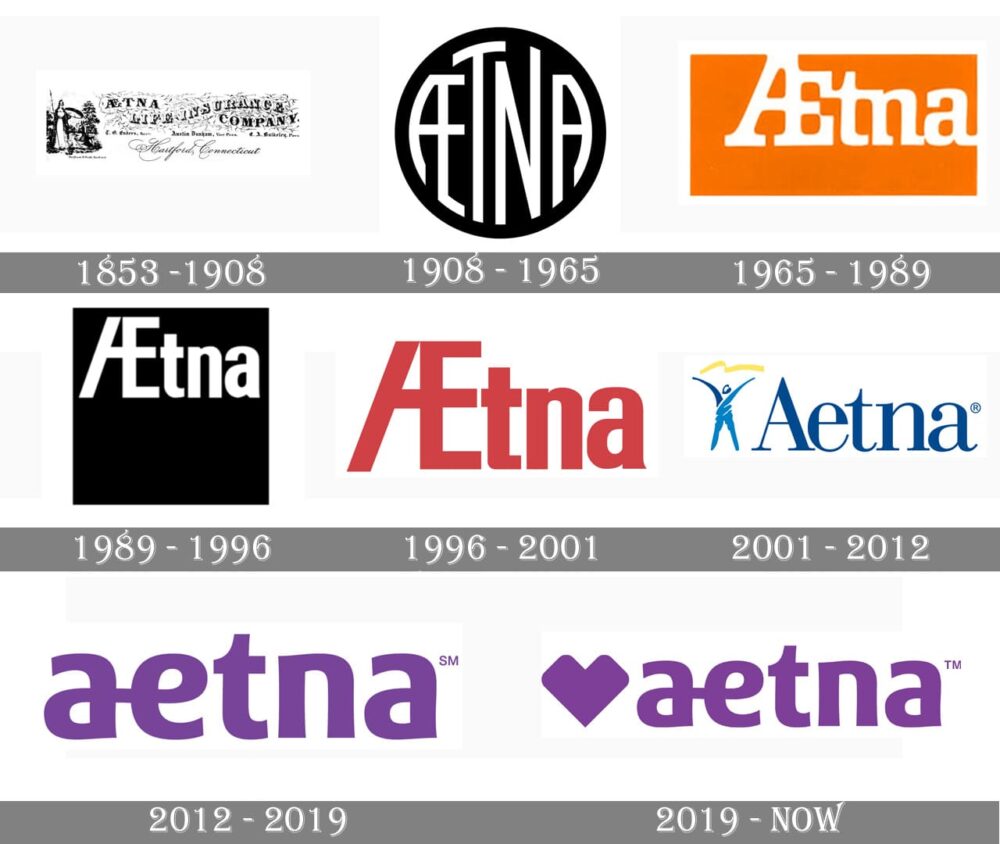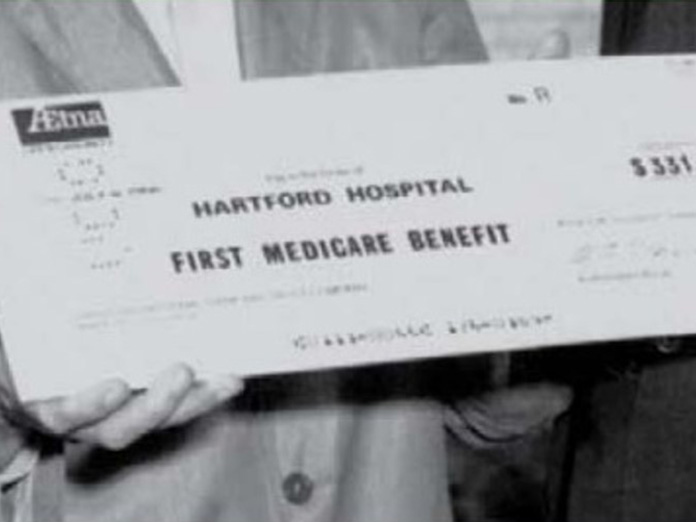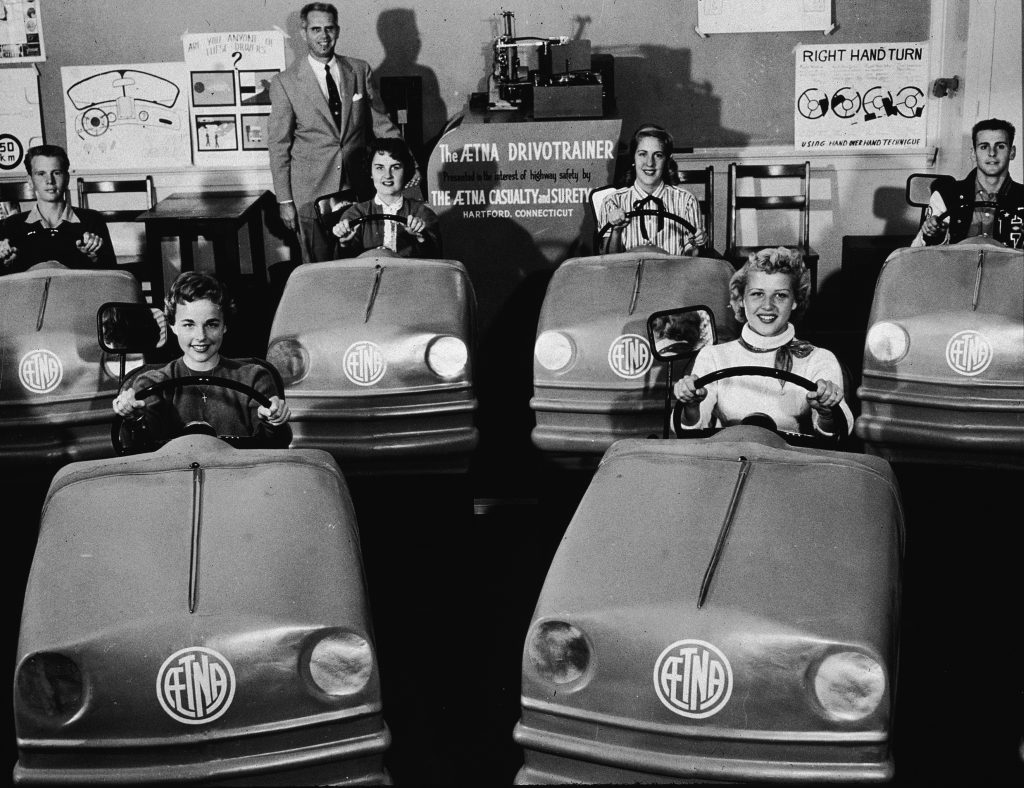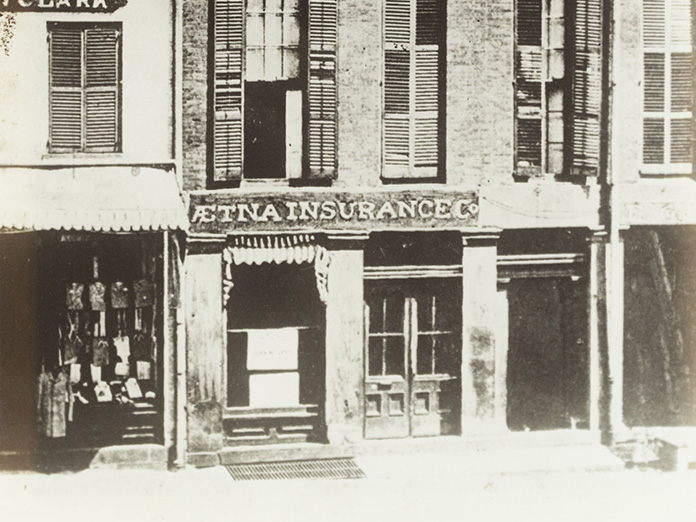Aetna, Glad I Met Ya. I Guess.
Hartford
November 1999
CT museum visit #493, even though it closed to the public in 2001 after the 9/11 attacks and is probably in storage now. CVS purchased Aetna in 2018 for $69 billion.
There aren’t too many museums included on CTMQ that closed several years before CTMQ began. However, in the case of The Aetna Museum, I’ve actually been to it so I feel like it’s worth a quickie page. Also, since I felt the need to write about The Travelers Insurance Museum, also in Hartford, and also closed to the public for many years, I couldn’t ignore Aetna.
Even if Aetna is no longer Aetna.

Like many people in central Connecticut, I worked for Aetna. My stint was from 1999-2009. In that time, I worked in State House Square in Hartford, then a faceless building in Windsor, then in the large Middletown building, then finally at the massive Farmington Avenue headquarters in Hartford. I was moved to Windsor because Aetna stopped renting space in State House Square. I was moved to Middletown for a job change. And I was moved to Hartford because Aetna left the Middletown building.
Then, a decade later, CVS bought Aetna and a few years after that, the massive building – the largest colonial building in the world mind you – sits mostly empty in our post pandemic, post-Aetna-as-Aetna world.
But way back in 1999, when I was being drug tested and human resources orientated, I went to the world’s largest colonial revival style building and the Aetna Museum within. It wasn’t awesome.

One thing I always found odd about Aetna is that it is named after Mount Etna, which in the early 1800’s when Aetna formed, was the most active volcano in Europe. And Aetna began as a fire insurance company, so… like, was it “protect your home against volano-caused fires?”
I won’t walk you through the vast history of Aetna, though it is fairly impressive… but rather niche. Like, do you care that the first president, Thomas Kimberly Brace, is also considered the “father of life insurance” because in 1820 he was the first to begin underwriting life insurance and annuities?
(Thirty years later the life and annuities business spun off to become Aetna Life Insurance Company – or ALIC as it was called alllll the way until it was sold to ING, now Voya, when I worked there. Anyway, the more interesting bit is that the original Aetna Insurance, the fire insurance concern, went on to become Connecticut General which… is Cigna today.)

There was that bit of a stumble during the 1850’s when Aetna issued life insurance policies on an undetermined number of slaves, naming their owners as beneficiaries. They apologized for this 150 years later when I was working there too.
No history museum of Aetna would be complete without a bunch of stuff about Morgan G. Bulkeley. Sure, he has a bridge and high school in Hartford named for him, but… yeah…
Bulkeley served in the American Civil War, and became a Hartford bank president before becoming the third president of the Aetna Life Insurance Company, a post he held for 43 years. He was elected to the National Baseball Hall of Fame in recognition of his role as the first president of the National League. Bulkeley served on the Hartford City Council and was a four-term mayor of Hartford. He later served as the 54th Governor of Connecticut for two terms and as a United States Senator.
He also was the proud policyholder of Aetna’s first accident policy, which was probably in the museum.

Aetna paid the first Medicare claim in the country in 1966.
Most of you know Aetna as just a health and dental insurance provider, so you’ll be pleased to learn they began offering health insurance way back in 1899. And they still haven’t integrated the systems in 2023. (Inside Aetna joke!)
Alright, you want the cool stuff? How about the Drivotrainer!
The Drivotrainer was an automobile driving simulator promoted by the Aetna Insurance Company and widely used in driver training classes. There was one at the Aetna Museum.
As an automobile insurer since 1902, Aetna had a financial interest in promoting highway safety. The company committed to innovating new methods of driver instruction in 1935, when it introduced the “Reactometer”, the first machine designed to record motorists’ reaction time. Aetna next developed the “Driverometer”, a trainer which used color motion pictures to simulate actual driving conditions and the “Roadometer”, which provided a short motion picture test including most phases of automobile operation and provided a scorecard.

Cool, but these were just steps along the path to the Drivotrainer and the Aetnacar. I had driver’s ed in 1990 and we used this same technology.
In 1951, Aetna developed the Aetna Drivotrainer, the first combination of automobile simulator and motion pictures designed for behind-the-wheel instruction in drivers’ training classrooms. The Drivotrainer classroom contained 15 small single seat “Aetnacars” equipped with controls as similar as possible to those used in actual automobiles. The gas pedal changed the volume of the engine noise, the steering wheel and the clutch and brake pedals provided realistic resistance, even the seat mimicked an actual automobile seat, simulating a realistic on-road driving experience in the safety of the classroom. A motion picture projected on a large screen in front of the room provided the visual stimulus of a drive on streets and highways, while the students “drove” their simulators. Their responses were collected and recorded on a central unit for the instructor to monitor and correct.
The complete course included 22 films produced by Aetna in its motion picture bureau, in collaboration with the New York City Department of Education. The final exam film constituted a difficult 25-minute road test including many varied traffic situations and highway emergencies. These films were the first complete driver training course recorded on film to support classroom simulation.
I thought these were the coolest things in school. (I assume I used slightly more modernized versions, but I swear it was film and it looked like the mid-1950’s.

And, continuing the theme, Aetna wound up selling its property and casualty business (car and home insurance, mostly) to The Travelers in 1996.
Let’s see, what else would have been in this museum? Aetna was the first insurance company to advertise on television in 1944. Wait… 1944?! Wow. Aetna insured America’s original seven astronauts in NASA’s Mercury program, the first life insurance policies on astronauts.
Okay, I’ll stop here. I have no idea what’s going to happen to the massive building at 151 Farmington Avenue. Who knows what CVS will do with Aetna and who knows what the remote work policy will morph into by the 2030’s. Who knows if the section of I-84, known as the Aetna Viaduct, will ever be improved.
And who knows how long the geographic center of Hartford will remain have its prominent setting at the Aetna Building? All I know is that this museum, as with many private corporate museums, will likely never see the light of day again to the yearning masses, so this page is all you’ll ever Getna from Aetna.

![]()
Aetna About Us
CTMQ’s Museum Visits

Leave a Reply